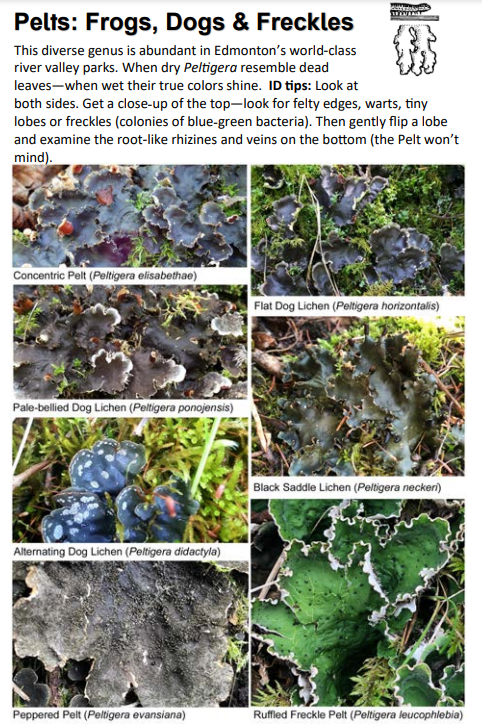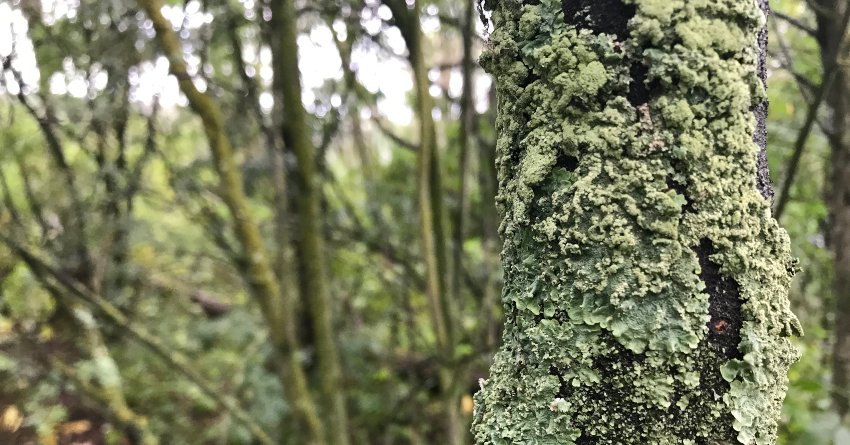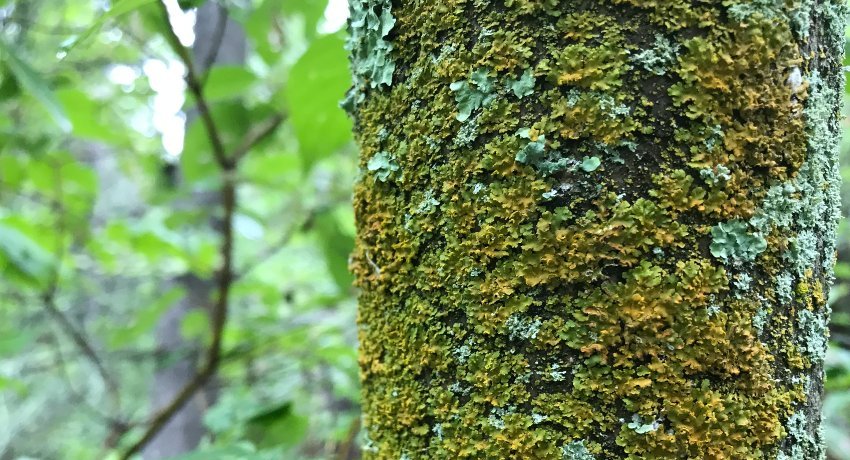Despite the millions of potential observers in cities, urban lichens are understudied. A recent blockbuster paper helps Edmontonians get to know their neighbours. It includes a detailed checklist of species found in the city, images of each species, local distribution maps, and identification keys.

Booklet: Diane Haughland Photos: Diane Haughland and Laura Hjartarson
This inventory was the first step to establishing a local biomonitoring program. Lichens have been used across the globe to understand the local environment. Their unique biology—they are long-lived, stay in one place, grow year-round, and absorb nutrients (and any pollutants) from the air—has made them useful “biomonitors” of local air quality conditions.
Knowing which lichens are where helps us then understand how local lichen distributions are related to different environmental conditions. There is interest in Edmonton in monitoring air quality using observations of lichens by the public. Such a program needs lichens that are easy to identify and responsive to changes in air quality (different lichen species are more or less tolerant of lower air quality). The recent paper used apps like NatureLynx and iNaturalist to glean which lichens the public notice and accurately identify. Next, more work will be done to understand the relationships between species’ distributions and air quality gradients.

Photo: Sydney Toni
Want to get started as an urban lichenologist? The printable booklet “Common Lichens of Edmonton Alberta” was created by ABMI lichenologist Dr. Diane Haughland last year. It includes easy-to-understand descriptions of the major types of lichen you’ll find and photos of common species.
You can read the full paper here.

